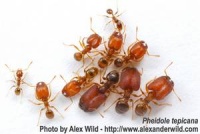Difference between revisions of "Robotics Group"
| Line 107: | Line 107: | ||
|valign="top" width="15%" style="padding: 2px; border:1px solid #FFEDCC; color: #000000; background: #FFFCE6;"| |
|valign="top" width="15%" style="padding: 2px; border:1px solid #FFEDCC; color: #000000; background: #FFFCE6;"| |
||
| + | [[File:RG_ascens.png|frameless|200x200px]] |
||
| − | Image |
||
|valign="top" width="85%" style="padding: 2px; border:1px solid #FFEDCC; color: #000000; background: #FFFCE6;"| |
|valign="top" width="85%" style="padding: 2px; border:1px solid #FFEDCC; color: #000000; background: #FFFCE6;"| |
||
| + | Self-aware, self-adaptive and self-expressive autonomic components, running within environments which are called |
||
| − | ASCENS |
||
| + | “ensemblesâ€, have been proposed to handle open-ended, highly parallel, massively distributed systems that can span |
||
| + | millions of nodes with complex interactions and behaviours. However, these complex systems are currently difficult |
||
| + | to develop, deploy, and manage. The goal of the ASCENS project is to build ensembles in a way that combines the |
||
| + | maturity and wide applicability of traditional software engineering approaches with the assurance about functional |
||
| + | and non-functional properties provided by formal methods and the flexibility, low management overhead, and optimal |
||
| + | utilization of resources promised by autonomic, adaptive, self-aware systems. |
||
|} |
|} |
||
Revision as of 16:36, 8 October 2012
|



